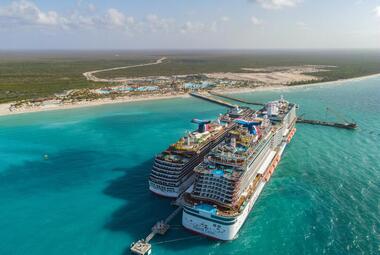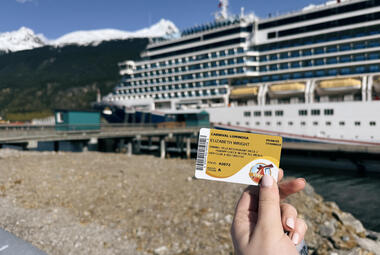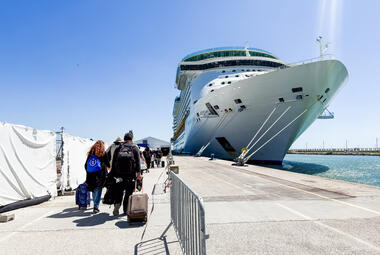What really works to minimize seasickness?
As soon as I got on my first cruise, I realized that I was susceptible to seasickness.
Once the ship begins moving, I start feeling nauseous, dizzy, and sick. This makes it hard for me to focus and enjoy the cruise vacation.
The first time I realized I would be struggling with this was night one of my first cruise.
I was on Royal Carribean's Wonder of the Seas, introducing myself to other cruisers at an event. Suddenly, the boat accelerated, and I started stumbling from dizziness and nausea. All my first-cruise excitement turned into a sick feeling in my stomach.
Thankfully, I'd brought along motion sickness pills. Once I returned to my cabin and took a Dramamine pill, I started feeling better. Since that moment, though, I’ve always had to plan ahead to make sure I won’t feel seasick.
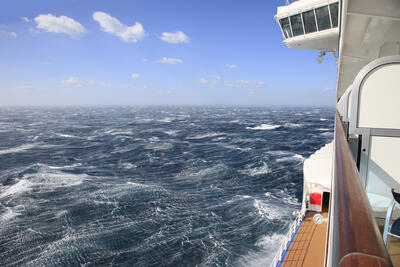
Seasickness can ruin a cruise vacation: you may have to excuse yourself from a formal dinner, or even miss out on activities when you're feeling too sick to function.
Cruising is a fun, affordable, and worthwhile form of travel that I would hate for anyone to miss out on it.
If fear of seasickness has you hesitating to get on a cruise ship, look no further! On my most recent cruise, I tried out the most commonly recommended seasickness hacks to find the best one.
Read more: Top first time cruise mistakes to avoid
What is seasickness?
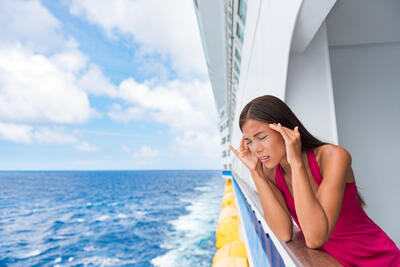
Anyone who's experienced motion sickness before—in cars, planes, or rollercoasters—is already familiar with the feeling of being seasick.
Seasickness is a form of motion sickness that occurs when the ship begins moving. This movement creates a discrepancy between the visual input and the vestibular system in your inner ear.
Essentially, the body’s balance mechanism becomes disoriented, and your body's senses are confused into becoming imbalanced.
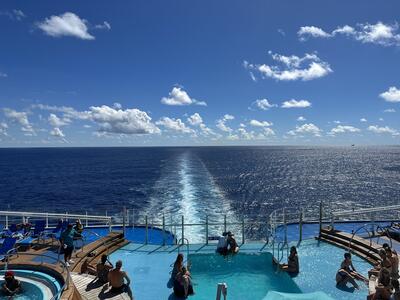
The imbalance of your senses can lead to symptoms such as dizziness, fatigue, headaches, loss of appetite, shallow breathing, nausea, cold sweats, and even vomiting.
Safe to say, it is not a pleasant feeling.
Not everyone experiences seasickness. Women and children are more susceptible, and genetic markers can indicate those more likely to experience it. People who get migraines are also more likely to suffer from motion sickness.
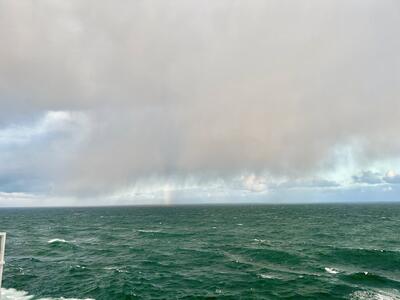
But if you are susceptible, you're probably all too familiar with that miserable dizzy feeling.
Thankfully, cruise lines have done their part to develop solutions for seasickness.
Modern ships have stabilizers on their sides to help counteract the sea’s motion. This results in less turbulence felt onboard.
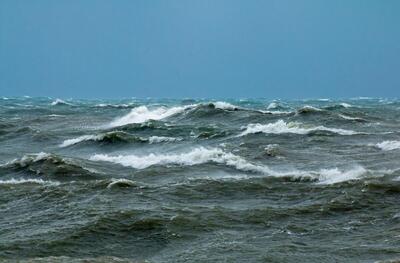
The newer the cruise ship, the more advanced and effective the technology can be.
Skilled captains also make every effort to avoid rough seas and minimize any uncomfortable sailing conditions.
Read more: The 9 Roughest Seas In The World For Cruise Ships
These reductions, however, don’t eliminate all the misery of seasickness. Here are some additional tricks you can try to prevent that icky feeling.
On my recent 3-night cruise on Royal Caribbean's Allure of the Seas, I went ahead and tried all the recommended hacks for seasickness.
Choosing the right stateroom location
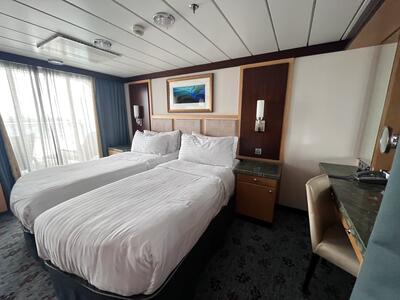
I started out by booking a better stateroom.
Choosing your stateroom location carefully can help prevent seasickness. Focus on finding areas that feel less of the motion of the cruise ship.
Staterooms in the middle of the ship and on lower decks are better locations if you’re prone to seasickness, whereas areas more forward, further back, or higher up on the ship are likely to feel more motion.
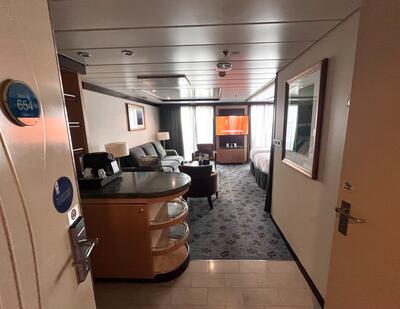
For this cruise, I booked a Grand Suite stateroom located towards the middle of the ship.
Grand Suites feature an expansive, which I knew I could use to get fresh air and watch the horizon. These hacks help strategies your body and improve nausea.
My room was located on the 10th floor, just between the middle and the back of the ship. It was middle enough that I didn’t feel seasick while inside the room.
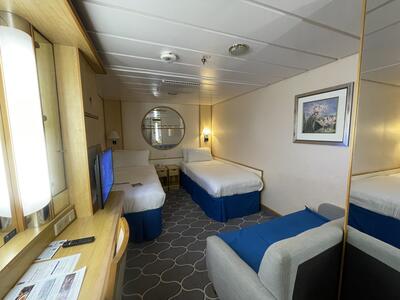
Staying in windowless inside cabins, which I typically do because of the lower cost, can result in confined spaces that exacerbate feelings of nausea.
Being on a larger ship also helps; the size of a big ship like the Oasis Class Allure of the Seas minimizes the feeling of motion.
Read more: What cruisers wish they knew before going on their first cruise
My rating: ★★★☆☆
Acupuncture pressure bands
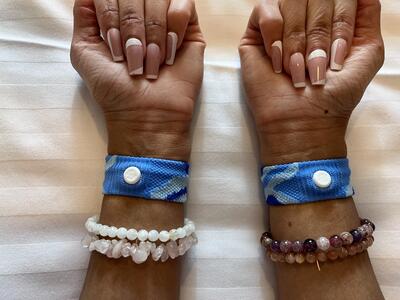
On the first day of my cruise, I tried acupuncture pressure bands.
Before the cruise, I purchased a small set of SeaBand bracelets. These bands target pressure points on the wrist; two plastic knobs apply direct pressure to the P6 (or Nei-Kuan) point on either wrist.
This pressure is supposed to stimulate your median nerve and interrupt the “I’m sick” messages your brain is sending your stomach.
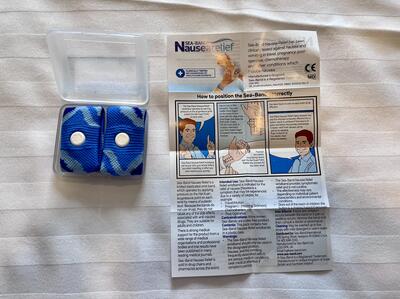
There isn't a lot of conclusive scientific evidence on whether these bands actually work. Some studies imply it works through a placebo effect, while others suggest there may be a real benefit. Regardless, many cruisers have reported positive outcomes when they wear their bands for the length of the cruise.
This was my first time trying these bands, and I wasn't a huge fan. I struggled to make them stay in exactly the right spot.
Since they work through pressure points, it seems important that they stay on the right pressure point. But I’m not an expert at finding them, and the bands are liable to slip off.

The instructions say that the SeaBand takes 2-5 minutes to become effective.
I put them on once I got onboard before the ship set sail around 5 P.M. One hour later, however, I started to feel very ill during dinner. I tried applying extra pressure to the plastic studs myself, and after about an hour the feeling improved.

I’m not sure if I started out putting the bands in the wrong spot, or if I just needed that extra pressure to feel better.
Without any remedies, I would rate my usual (“control”) feeling of seasickness at a 7/10. With the bands on (and with me applying some additional pressure), I felt more like a 5/10.
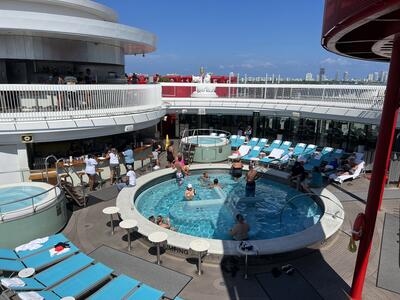
I also made the mistake of keeping the bands on when I got in the water, and they stayed damp for the rest of the evening. It felt like when your sleeves accidentally get dipped in the sink!
Personally, I didn’t like that the bands were something I had to keep on at all times. Moreover, they only lessened my dizziness, rather than eliminating it entirely like other remedies.
My rating: ★★☆☆☆
Over-the-counter motion sickness medicine

Pharmacies have developed medication to prevent feelings of nausea and sickness from motion on the sea.
You can obtain these over-the-counter, and you only have to take one or two pills to start feeling the positive effects.
The two most common brands, Bonine and Dramamine, work by using different antihistamines to alleviate symptoms.

I prefer Dramamine, as it is a brand with more options available. Additionally, it's the older of the two, first introduced to the market in 1949.
Dramamine uses dimenhydrinate, an antihistamine that has a side effect of drowsiness.
Drowsiness could be a benefit or a disadvantage, depending on when you prefer to take the pills.

If you take it at night, it could help you sleep through any intense rocking of the boat; however, if you have to take it at a different time of day, such as the morning of a sea day, the pill could make you sleepy, enough that you miss out on important events on vacation!
I’ve never experienced drowsiness from Dramamine—either due to the excitement of a cruise, or the fact that I’m a heavy coffee drinker.
If you're worried, though, they do sell non-drowsy versions, which include more ginger and make for a more natural option. However, these versions can be less effective.

As a precaution, I took two Dramamine pills before going to sleep to ensure that they would kick in by the time I woke up the following morning.
Even though the ship was docked at Nassau for the majority of the day, I chose to remain onboard and wanted to make sure that I wouldn't experience seasickness when we started sailing again.
Once we started moving, I didn’t feel seasick at all! I would rate my sickness at a 0/10.
My rating: ★★★★★
Natural ginger remedies

On the third day, I decided to try more natural remedies for seasickness.
Ginger root is one of the oldest and most famous remedies for seasickness. Whether in the form of candy, tea, or supplements, it's effectively alleviated nausea for centuries.
I decided to buy a packet of ginger gum for my cruise, and try it on the third, and final, night. Our ship had left Perfect Day at CocoCay by the time I began chewing. It was full-steam ahead back to Port Canaveral.
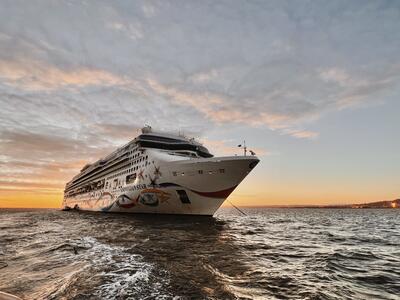
I honestly didn’t expect the ginger gum to help much, especially when the boat was moving so quickly.
I was pleasantly surprised when it was more effective than I expected! The ginger brought the nausea down to a 2/10 when I was actively chewing the gum,
Even if I took a break from chewing, I felt my seasickness stay lower then usual, perhaps at around a 4/10.
Read more: 10 tips to make your next cruise healthier
One negative about this remedy is that I had to consistently chew the gum to get the best effects. Whenever I was eating or drinking, I had to take it out of my mouth, which resulted in me feeling just a little more seasick.
I'm also not generally a big gum fan.
I might try some ginger candies or tea in the future that I could carry around with me.
My rating: ★★★★☆
Overall, medicine is the most effective method

Personally, over-the-counter medication is my favorite hack for seasickness.
On a cruise, you want to find a consistent method that will work 24/7.
Chewing gum, eating ginger, keeping SeaBands on your wrist, and looking at the horizon are great tools, but you can’t do that for the entire cruise.
You'd have to chew the gum constantly, always have the SeaBands on your wrist, or be stuck looking out at the horizon!

On the other hand, over-the-counter pills are the only item that you can take one time and stay in your system for 12 to 24 hours.
They're the quickest, and longest-lasting method I've found.
If you struggle with over-the-counter options and their side effects, I recommend trying different brands or speaking with your doctor about another suggestion.




